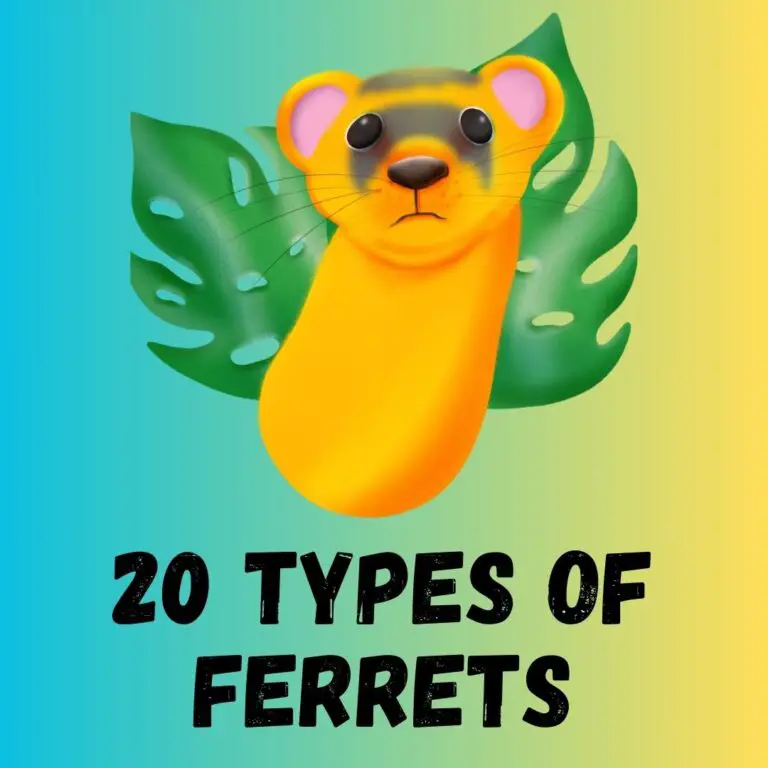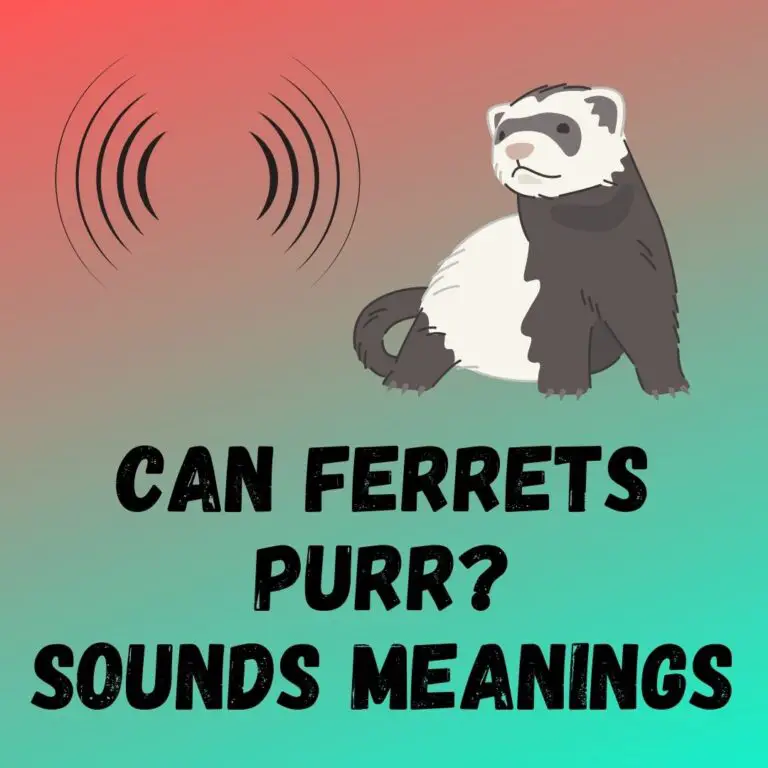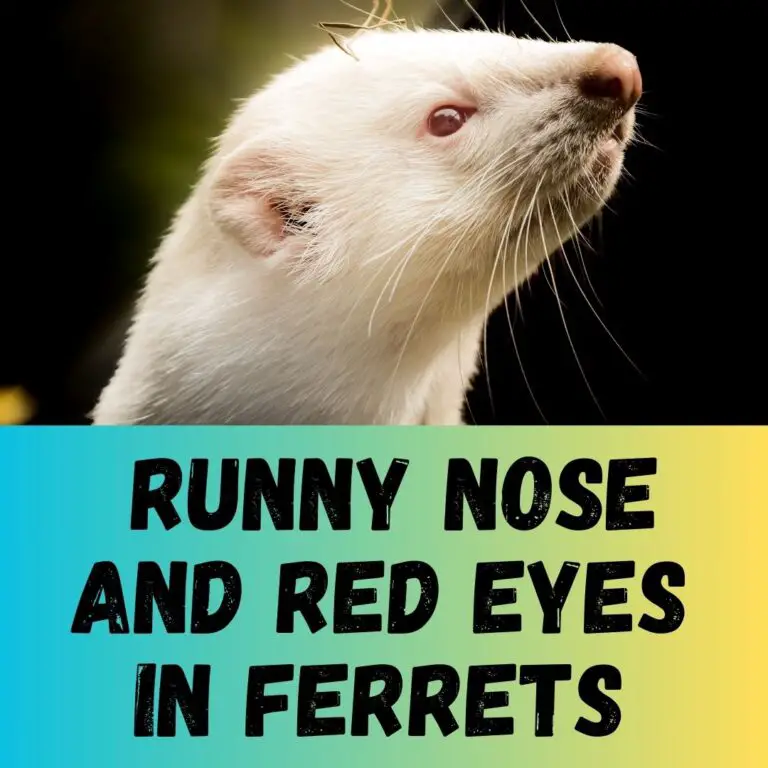
Ferrets may be small in size, but they sure know how to make a big noise! As a ferret owner, I’ve come to learn that these adorable little creatures have quite the vocal range. From playful chirps to alarming screeches, ferrets use their unique sounds to communicate with us and with each other. In this article, I’ll be diving into the fascinating world of ferret noises and what they actually mean. So, if you’ve ever wondered why your furry friend is making a certain sound, or if you’re considering getting a ferret and want to be prepared for their vocalizations, you’ve come to the right place. Let’s unravel the mystery of ferret noises together!
The Different Types of Ferret Noises
As a ferret owner, I’ve had the opportunity to really understand the vocal range and variety of sounds that these cute little creatures can produce. Ferrets are incredibly expressive, and they use different noises to communicate with humans and other ferrets. In this section, I’ll delve into the different types of ferret noises and what they mean.
- Dooking: This is probably the most well-known sound that ferrets make. It’s a unique, high-pitched noise that sounds a bit like a combination of a chirp and a chuckle. When ferrets dook, it usually means they’re excited, happy, or in a playful mood. It’s an adorable sound that you’ll definitely fall in love with.
- Chattering: If you hear your ferret making a rapid clicking or chattering sound, it usually means they’re excited or trying to get your attention. It’s their way of saying, “Hey, pay attention to me!” You might observe this noise when your ferret sees something interesting or when they’re trying to engage with you.
- Hissing: Like cats, ferrets can also hiss. If your ferret is hissing, it’s a sign that they’re feeling threatened, scared, or agitated. It’s important to give them space and allow them to calm down. Hissing should not be ignored, as it’s their way of warning you to back off.
- Squealing: This noise is characterized by a high-pitched, piercing sound that can be quite alarming. When ferrets squeal, it usually means they’re in pain or distress. If you hear your ferret squealing, it’s crucial to investigate the cause and determine if they need immediate medical attention.
- Whining: Ferrets can also whine, just like dogs. When they whine, it’s typically a sign of frustration or annoyance. They might whine if they’re not getting their way, or if they’re feeling bored or ignored. It’s a good idea to assess the situation and try to address their needs or provide them with some stimulation.
Understanding Playful Chirps and War Dances
Playtime with ferrets is always a joyous occasion. These energetic little creatures are known for their fun-loving nature and love for games. One way they express their excitement during play is through a unique vocalization known as chirping. When ferrets chirp, it’s a sure sign that they are having a blast!
Chirping is a high-pitched noise that resembles a bird’s chirp. It’s usually accompanied by boundless energy and playful behavior. When I see my ferret chirping, I can’t help but join in on the fun! It’s their way of inviting me to engage in interactive games like hide-and-seek or chase.
Another fascinating behavior that often accompanies chirping is the war dance. The war dance is a series of hops, leaps, and twists that ferrets perform while making this chirping sound. It’s an adorable sight to behold! Just picture a furry little dancer happily hopping around, singing their playful song.
But what does all this chirping and dancing actually mean? Well, it’s their way of signaling their excitement and inviting you to participate. When a ferret chirps and performs the war dance, it’s a clear invitation for interaction and play. They are showing their trust and affection for you, and they want you to join in on the fun!
It’s important to keep in mind that chirping and the war dance are different from other vocalizations. They are not sounds of distress or aggression, but rather pure expressions of joy. Understanding these playful ferret noises can help deepen the bond between you and your furry friend.
So, the next time you hear your ferret chirping and see them performing their adorable war dance, don’t hesitate to join in! Engaging in playtime with your ferret is not only a great way to bond but also provides essential mental stimulation and exercise for your furry friend.
Decoding Alarm Calls and Squeals
When it comes to communication, ferrets have quite a diverse vocal repertoire. One of the most important sounds they make is the alarm call. This is a high-pitched, repeated noise that indicates fear or danger. As a responsible ferret owner, it’s crucial to recognize this sound and assess the situation accordingly.
The alarm call is usually accompanied by physical signs such as a puffed-up tail, arched back, and raised fur. If you hear your ferret making this noise, it’s essential to investigate the cause to ensure their safety. It could be an unfamiliar noise, a sudden movement, or the presence of a potential threat.
In addition to the alarm call, ferrets also use squeals to express their discomfort or displeasure. Squealing is a sharp, piercing sound that can range in intensity. It may occur during playtime, when a ferret feels overwhelmed, or if they are in pain or distress.
Understanding the context in which the squealing occurs is crucial. If your ferret squeals during play, it may indicate that things are getting too rough, and it’s time to intervene and redirect their energy. However, if your ferret squeals unexpectedly and seems in distress, it’s vital to assess their health and seek veterinary attention if necessary.
By paying attention to the different tones and contexts in which ferrets make alarm calls and squeals, you can better communicate with your pet and ensure their well-being. It’s all about being attuned to their signals and providing the care and support they need.
Remember, communication is a two-way street. Just as ferrets use vocalizations to express themselves, we can also use our voices and body language to interact with them. Building a strong bond with your ferret involves understanding their noises and responding appropriately.
In the next section, we will dive into the fascinating world of barking and hissing ferrets, exploring their meanings and how to interpret these vocalizations. So, let’s continue our journey of understanding ferret noises and what they mean.
The Meaning Behind Whining and Gurgling Sounds
Whining and gurgling are two distinctive sounds that ferrets often make, and understanding their meanings can help you better care for and communicate with your furry friend.
Whining sounds are usually high-pitched and continuous, resembling a soft cry or whimper. Ferrets typically use whining as a way to seek attention or express their desire for something. It can be a sign that they want to be let out of their cage, want to play, or are feeling lonely. Whining can also indicate discomfort or pain, so it’s important to pay attention to the context and any accompanying behaviors.
Gurgling sounds, on the other hand, are typically lower in pitch and resemble a sort of bubbly or guttural noise. These sounds usually come from the digestive system and are associated with the movement of gas or fluids in the intestines. Gurgling sounds are quite common after a ferret has eaten, especially if they’ve had a large meal or if they’ve been eating something that doesn’t agree with their digestive system. In most cases, gurgling sounds are harmless and will resolve on their own. However, if you notice any accompanying signs of discomfort or changes in your ferret’s behavior or appetite, it’s a good idea to consult with a veterinarian to rule out any underlying digestive issues.
It’s important to note that whining and gurgling sounds can vary from ferret to ferret, so it’s essential to observe your own ferret’s specific behaviors and context when interpreting these noises. By doing so, you’ll be able to meet your ferret’s needs and provide them with the care and attention they require.
Tips for Responding to Ferret Noises
When it comes to understanding and responding to ferret noises, there are a few key tips to keep in mind. Here’s what you need to know:
- Pay attention to context: Ferret noises can have different meanings depending on the situation. By observing the context in which the noise occurs, you can better understand what your ferret is trying to communicate. For example, if your ferret is hissing while being approached by another animal, it may be a sign of fear or aggression. On the other hand, if your ferret is hissing while at the veterinarian’s office, it may be a response to discomfort or stress.
- Listen for consistency: Some ferret noises, like dooking or chirping, are generally associated with positive emotions and playfulness. However, if you notice that your ferret’s dooking becomes louder or more frequent than usual, it could be a sign of excitement or even distress. Similarly, if your ferret’s chirping is accompanied by aggressive behavior, it’s important to intervene and redirect their energy into a more suitable form of play.
- Observe body language: Ferret noises are often accompanied by specific body postures and behaviors. Pay attention to your ferret’s overall body language to gain a better understanding of their intentions. For instance, if your ferret is whining while pawing at their food bowl, it could be an indication that they are hungry or in need of attention. By combining vocal cues with visual cues, you can respond more effectively to your ferret’s needs.
- Respond appropriately: Once you have deciphered the meaning behind your ferret’s noise, it’s important to respond in a way that meets their needs. If your ferret is hissing due to fear or stress, provide a calm and safe environment for them. If your ferret is dooking or chirping during playtime, engage in interactive play to satisfy their need for mental stimulation and exercise. By responding appropriately, you can strengthen the bond between you and your furry friend.
Remember, understanding ferret noises is just one piece of the communication puzzle. It’s also important to establish a strong bond with your ferret through regular interaction, trust-building exercises, and providing a nurturing environment. By being attentive and responsive to your ferret’s vocalizations, you can create a harmonious and fulfilling relationship with your fuzzy companion.
Conclusion
Understanding ferret noises is crucial for building a strong bond with these adorable creatures. As I’ve discussed in this article, ferrets have a diverse vocal range and use different sounds to communicate with humans and other ferrets. By paying attention to their noises and observing their body language, we can decipher their messages and respond appropriately.
From the playful dooking to the alert chattering, each noise has a specific meaning. By familiarizing ourselves with these sounds, we can better care for our ferrets and provide them with the attention they need.
Establishing a nurturing environment and engaging in trust-building exercises are essential for creating a harmonious relationship with our furry companions. Regular interaction and responsiveness to their vocalizations will strengthen the bond we share with our ferrets.
So, the next time your ferret squeals or whines, remember to listen attentively, consider the context, and respond accordingly. By doing so, you’ll be well on your way to fostering a fulfilling and loving relationship with your furry friend.






